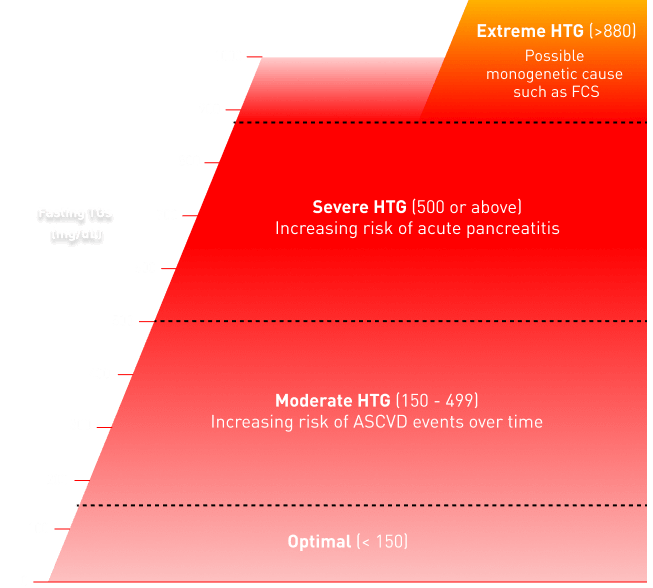Fasting triglycerides ≥500 mg/dL? That’s severe hypertriglyceridemia (sHTG).
When triglycerides (TGs) rise above optimal levels, the risks rise, too.23, 31
sHTG has many causes, and a combination of factors can lead to it. One thing remains the same: the risks caused by sHTG are clinically important.3,1,10

sHTG strongly increases the risk of acute pancreatitis, especially when fasting TG levels exceed 1000 mg/dL. Fasting TG levels consistently above 880 mg/dL may indicate a monogenetic cause of sHTG, such as familial chylomicronemia syndrome (FCS).14 According to current guidelines, it is reasonable to reduce TGs whenever levels exceed 500 mg/dL to reduce the risk of acute pancreatitis.23,36,37


